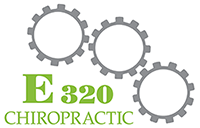SHARE THE LOVE
Do you find yourself reaching for that third cup of coffee just to make it through the afternoon? Does your child seem constantly wired yet somehow exhausted—struggling to focus at school, but still bouncing off the walls at bedtime?
If so, you’re not alone. And no, you’re not doing anything wrong.
What you and your family may be experiencing is something called cortisol addiction—a neurological pattern that’s becoming more and more common in today’s world. The good news? Once you understand what’s happening beneath the surface, you can take meaningful steps to restore balance and help your whole family feel calmer, more focused, and more like themselves again.
Understanding the “Wired and Tired” Cycle
Your body has an incredible system that helps you respond to everything life throws your way: the autonomic nervous system. It has two main branches:
- Sympathetic Nervous System (your “gas pedal”): This is your fight-or-flight mode. It helps you react quickly to emergencies by releasing stress hormones like cortisol and adrenaline.
- Parasympathetic Nervous System (your “brake pedal”): This is your rest-digest-restore mode. It kicks in during calm times to help you heal, sleep, digest, and recharge.
In a balanced body, you shift between these systems fluidly. But in today’s overstimulating, fast-paced world, most of us—kids included—are stuck in gas pedal mode far too often. This leads to chronic sympathetic dominance, where the body relies on stress hormones just to function. And the result? You feel wired but completely worn out. Your child may be labeled as “hyperactive,” but they’re also emotionally exhausted and can’t calm themselves when it matters most.
How It All Begins: The Perfect Storm
This pattern doesn’t start in adulthood. In fact, for many kids, it begins at birth.
Interventions like forceps, vacuum extraction, inductions, or C-sections can cause physical stress to a baby’s delicate upper neck and brainstem. That’s the area where the vagus nerve—the master controller of the parasympathetic system—lives. When this area experiences stress, it can lead to subluxation: neurological interference that keeps the gas pedal stuck on from day one.
What starts as colic, reflux, or sleep troubles in infancy can later become focus issues, anxiety, meltdowns, and challenges often labeled as ADHD.
And modern life only adds fuel to the fire:
- Blue light from screens disrupts sleep cycles and triggers cortisol
- Processed foods create blood sugar crashes that stress the body
- Overscheduled days leave little time for rest and regulation
- Constant digital stimulation keeps the brain in “on” mode
Children stuck in this state often seek more stimulation—whether it’s screen time, sugar, or risky behavior—just to get the dopamine and cortisol their brain is craving. And parents? We’re often caught in the same trap with caffeine, energy drinks, and nonstop to-do lists.
This isn’t just a personal problem—it becomes a family-wide nervous system pattern.
Why Medications May Not Help Long-Term
When a child is struggling with attention, hyperactivity, or emotional regulation, stimulant medications like Adderall or Ritalin are often prescribed. These medications do increase focus—but they do so by pushing the gas pedal even harder.
The problem? They don’t address the underlying nervous system imbalance. In many cases, they may actually reinforce the stress cycle, making it even harder to shift into parasympathetic mode over time.
Meanwhile, we as parents are modeling the same stress-driven behavior patterns we’re trying to help our kids escape. The cycle continues—unless we do something to truly reset the system.
A Better Way: Resetting the Nervous System for the Whole Family
Here’s the good news: your nervous system is incredibly adaptable. With the right support, it can learn to shift back into balance.
At E320 Chiropractic, we specialize in Neurologically-Focused Chiropractic Care that addresses the root cause of stress and imbalance. Our advanced INSiGHT Scans show us exactly where subluxation and neurological stress are building up, especially in the brainstem and vagus nerve regions. From there, we create personalized care plans that help your nervous system reset—so your body can shift out of fight-or-flight and into rest-and-restore mode naturally.
Over time, this allows both kids and adults to break free from the cycle of stress, stimulation, and burnout.
Building a Home That Supports Calm + Connection
While chiropractic adjustments create powerful shifts in the nervous system, there are also simple ways to support your family’s healing environment at home:
- Prioritize early, consistent bedtimes and reduce screen exposure before bed
- Create quiet, low-stimulation zones for play or rest
- Incorporate deep breathing, stretching, or time in nature
- Swap out processed snacks for more stable, nutrient-dense meals
- Build in regular, unstructured downtime—especially after school or work
These changes don’t need to be perfect. Just consistent. Over time, they help your child’s nervous system (and yours) feel safe enough to slow down and regulate.
A New Path Forward
If you see your family in this story—if you’re tired of the tantrums, the meltdowns, the constant need for caffeine or stimulation—please know that this isn’t about you doing anything wrong. This is what happens when our world demands too much from our nervous systems and gives us too little support.
But it doesn’t have to stay that way.
At E320 Chiropractic, we believe your family deserves more than just survival mode. We’re here to help you uncover what’s really going on underneath the exhaustion, the behavior challenges, and the wired-but-tired days. And we’re ready to walk with you toward regulation, connection, and lasting change.
Call us today at 864-367-6766 to schedule your first scan and take that first step toward balance—for you and your kids.
Because thriving families aren’t just possible—they’re absolutely worth fighting for.
